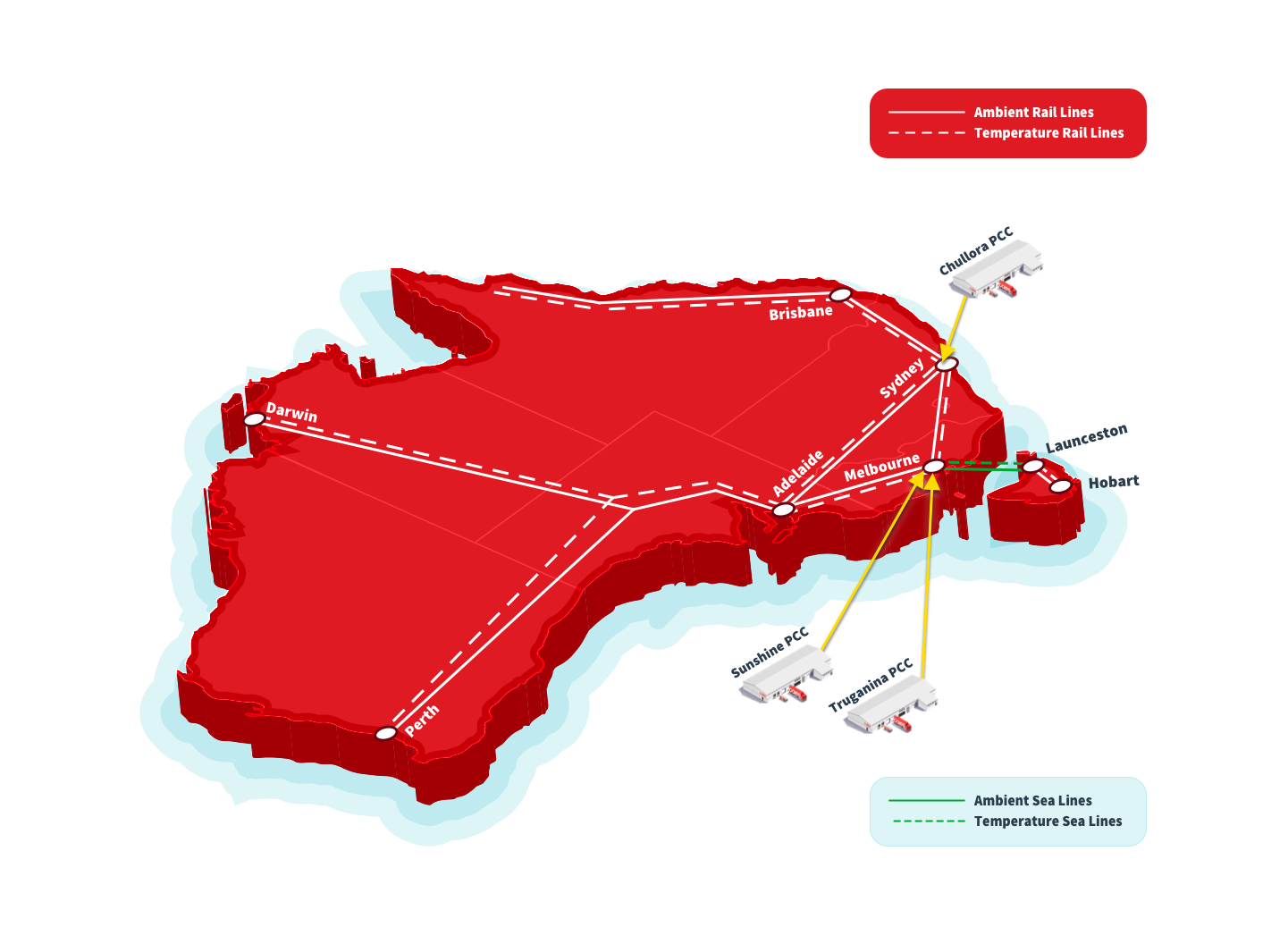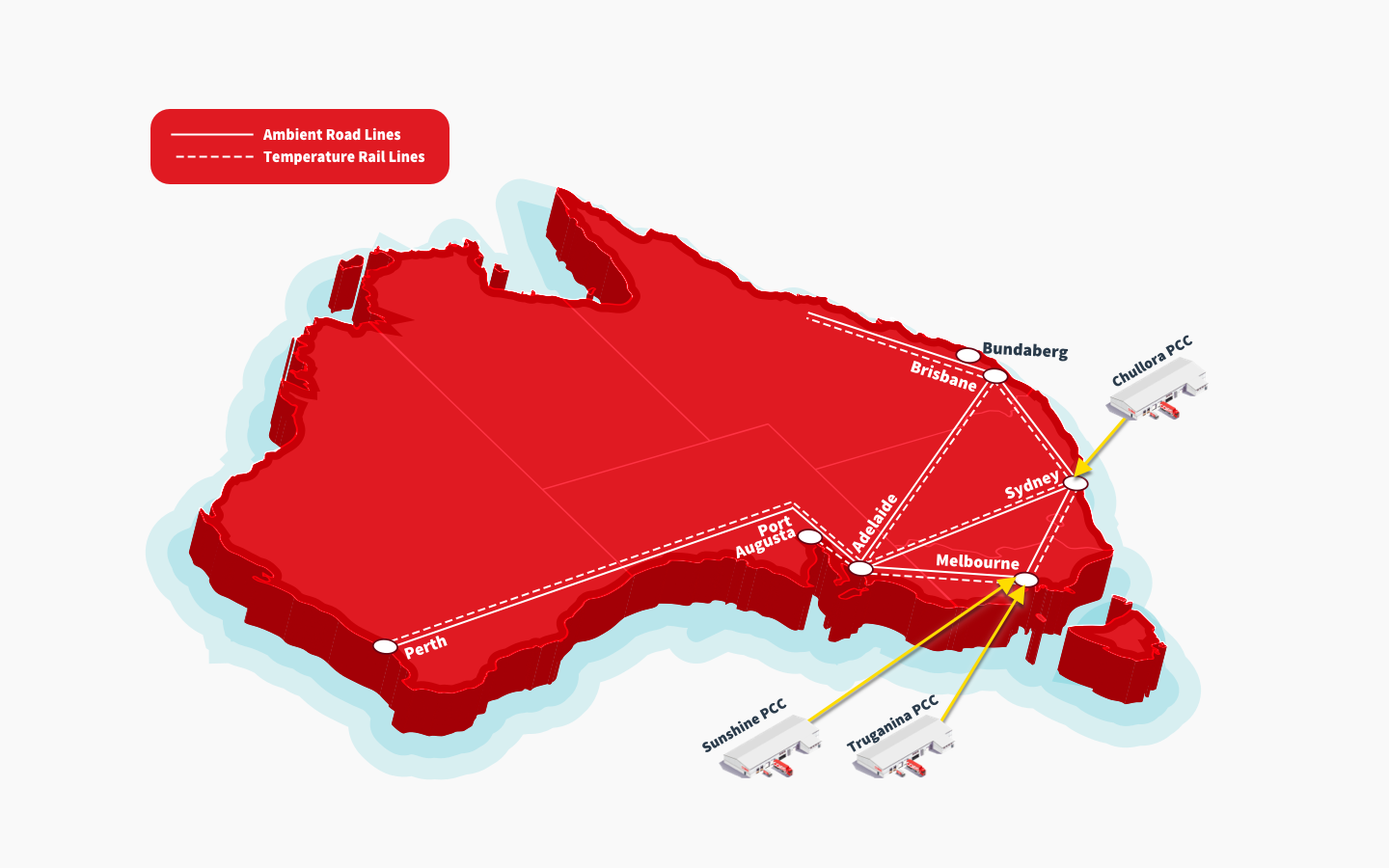Transport methods
Depending on your needs, we'll move your goods by road, rail, or sea.
Moving freight by road, rail, and sea
We tend to transport small loads to a Pallet Consolidation Centre (PCC). Inside the PCC we consolidate the small loads into full-truck loads, which keeps our emissions footprint and transport costs down, before delivering them to their next destination.
This also helps to reduce the amount of heavy vehicles on the road, which assists safety by reducing our frequency of exposure with on-road driving hazards/risks.
We tend to transport large loads directly to distribution centres, or occasionally to a PCC if vehicle loading restrictions determine otherwise.
Road
We mostly use road transport for short-haul and time critical journeys such as metro, interstate, and intra-state deliveries or for transporting between your source locations and our distribution centres and to rail heads and ports. We also use road when rail is not available, for example in remote regional locations.
Rail
Rail, which we tend to use for longer distances and when time is less critical, can be an environmentally sound and cost-effective transport method.
This also helps to reduce the amount of heavy vehicles on the road, which assists safety by reducing our frequency of exposure with on-road driving hazards/risks.
This also helps to reduce the amount of heavy vehicles on the road, which assists safety by reducing our frequency of exposure with on-road driving hazards/risks.
Sea
Sea is used for shipments out of Victoria to Tasmania and as a contingency option for Western Australia when rail is not available.
Primary Rail & Sea Network

Primary Intermodal Road Network
